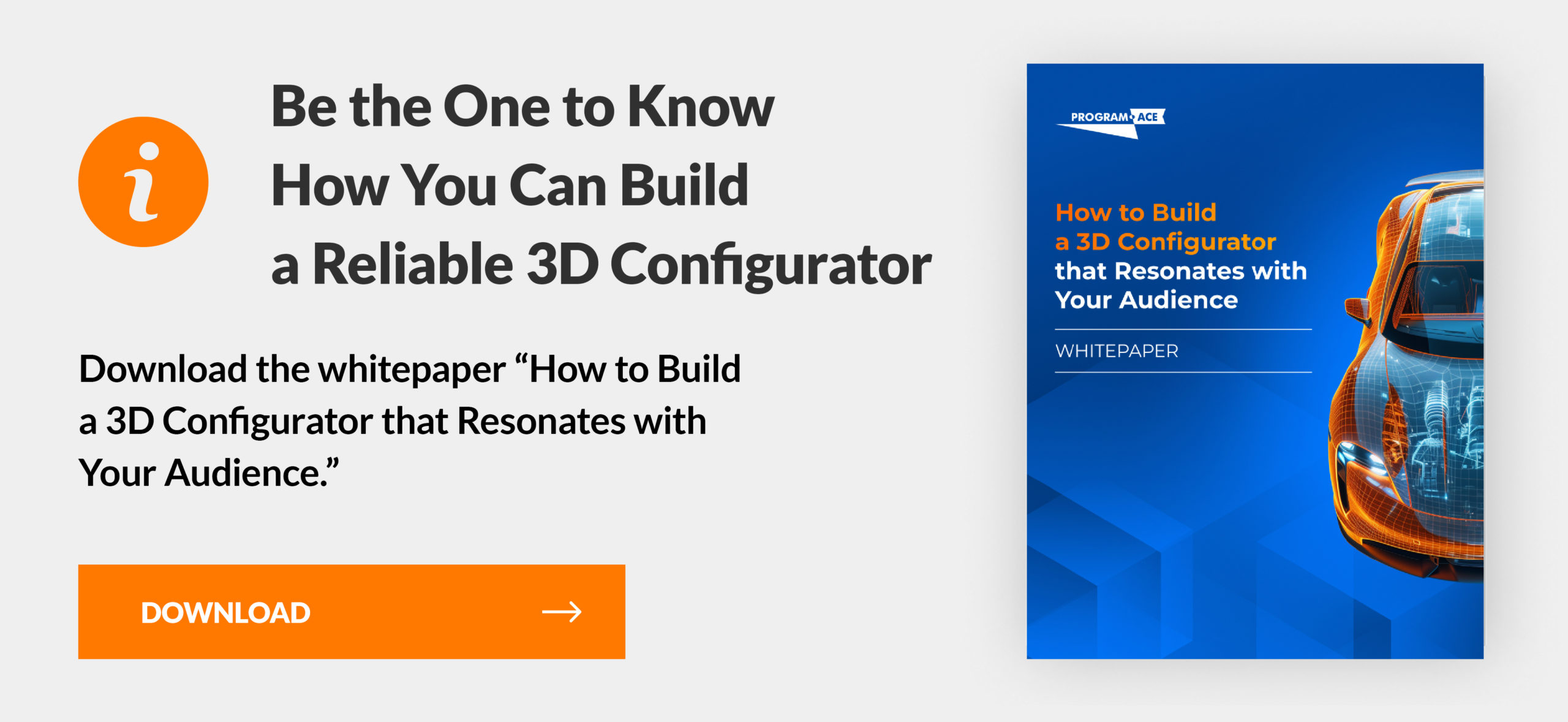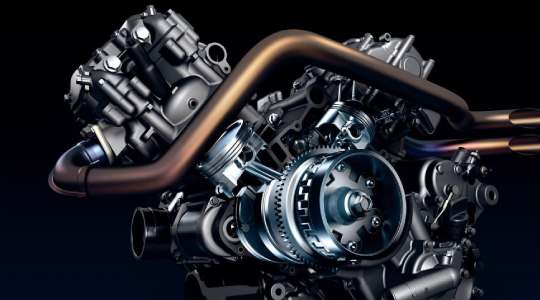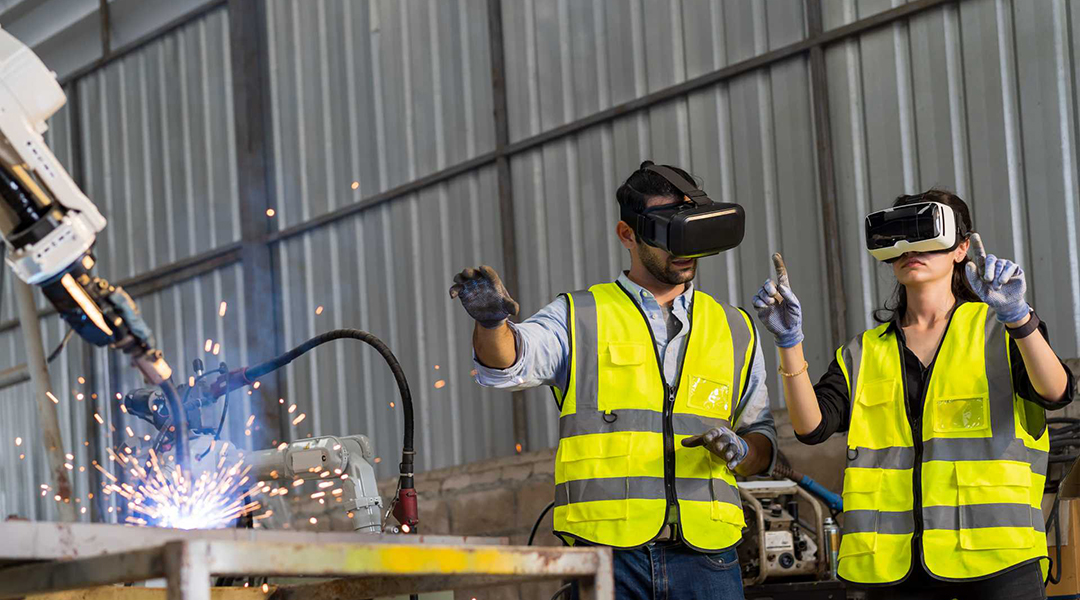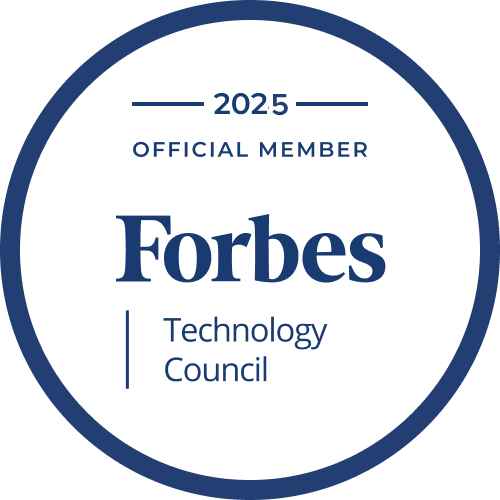Many companies are turning to product configurator solutions because customers now expect to personalize products before making a purchase. A configurator makes that process simple: buyers can select dimensions, colors, finishes, or technical features and see changes reflected immediately. That interaction not only increases confidence but also reduces the likelihood of returns and order mistakes.
In our professional work, we have found that configurators also enhance the effectiveness of sales teams. Instead of preparing endless manual quotes or visual mockups, teams rely on automated configurations that are always accurate. The result often leads to shorter sales cycles and fewer barriers between interest and purchase.
Several types of configurators exist, and each serves a specific role. Some provide quick two-dimensional previews, while others offer 3D interaction, augmented reality visualization, or rule-based customization for highly technical products. Selecting among them requires a close examination of product complexity, customer expectations, and system integration. In this guide, we explain all the options and outline a straightforward process for choosing the most suitable product configurator solutions.
Introduction: Why Product Configurator Software Matters
Modern consumers want to influence their purchasing decisions, particularly for complex or high-value items. Product configurator software empowers clients by allowing them to select and examine options before making a purchase. Instead of relying on static visuals, customers may experiment with different materials, features, and colors while getting quick feedback on cost and compatibility.
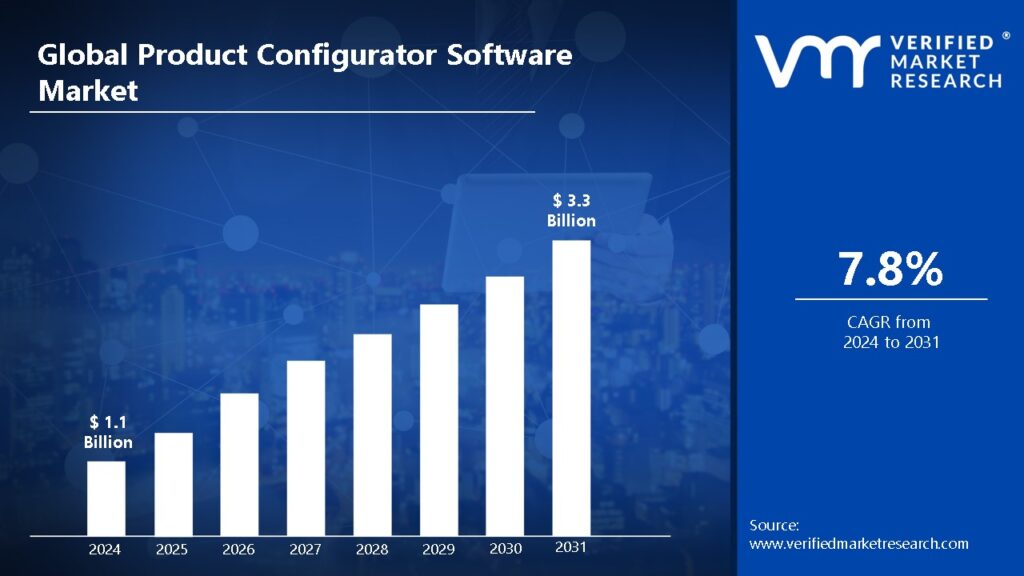
Our experience shows that configurators also cut inefficiencies for companies. Sales teams spend less time building manual quotes, and customers make decisions faster with fewer errors. In sectors like automotive, tools such as a 3D car configurator have become standard, giving potential buyers a clear view of custom vehicles. For furniture, electronics, or fashion, configurators reduce uncertainty and strengthen trust.
Since every business and product catalog is unique, configurators have evolved into several distinct categories. Each category reflects a balance between visual quality, interactivity, and technical integration.
Understanding these types is the first step toward choosing a solution that fits your products and customers:
- 2D configurators. Simplest to implement, image-based, affordable, but limited in realism.
- 3D configurators:
- Pre-rendered. High-quality, photorealistic visuals, but rigid and storage heavy.
- Real-time (web-based). Interactive, runs in-browser, with scalable updates that require optimization.
- Hybrid. Combine the speed of pre-rendered assets with real-time flexibility.
- Game-engine configurators (Unity / Unreal). Maximum realism, physics, and animation support, scalable to AR/VR, with higher costs.
- AR configurators. True-to-scale placement in real environments via mobile AR boosts confidence and reduces returns.
- VR configurators. Fully immersive, suited for high-value or complex items, requires VR-ready hardware.
- Constraint-driven configurators. Rule-based, integrated with ERP/PLM/CPQ, ensuring only valid configurations.
- AI-powered configurators. Intelligent suggestions, automated generation of textures or designs, and large-scale personalization.
A common point of confusion lies between pre-rendered 3D and real-time 3D configurators. Pre-rendered versions rely on images or animations generated in advance, which guarantees visual polish but limits flexibility when new options are introduced. Real-time 3D configurators, on the other hand, generate visuals on the fly, allowing customers to freely rotate, zoom, and test variations instantly; however, they require more optimization to run smoothly in a browser.
To make the differences more straightforward and to show where hybrid solutions fit in, let's define all 3D product configurators in a comparison table format, which highlights how each option balances realism, flexibility, and performance:
| Aspect | Pre-rendered 3D | Real-time 3D | Hybrid 3D |
| Visual quality | Photorealistic, fixed lighting and textures | High-quality, dynamic visuals with real-time adjustments | Mix of static high-fidelity previews and interactive elements |
| Interactivity | Limited: no rotation or dynamic control | Full interaction: rotate, zoom, and change instantly | Selective: quick previews with optional 3D exploration |
| Performance | Smooth on most devices due to pre-generated assets | Requires optimization; performance depends on hardware/browser | Balanced: lightweight previews with deeper interaction when needed |
| Scalability | Low: each variation must be rendered separately | High: updates applied without re-rendering | Medium: handles large catalogs more efficiently than pre-rendered |
| Best use cases | Luxury goods, furniture, marketing visuals | Automotive, electronics, complex consumer products | Fashion, furniture, e-commerce catalogs with mixed needs |
Understanding the Types of Product Configurators
Different configurators suit different industries and customer needs. A basic tool may only swap colors in flat images, whereas advanced platforms can automatically calculate technical constraints and pricing. Choosing the right type requires a balance between customer expectations and internal system capabilities.
According to our internal analysis, adoption trends indicate a shift toward interactive models that support real-time visualization. For example, a real-time 3D car configurator not only enhances customer engagement but also ensures that every configuration adheres to production rules.
Other sectors follow similar paths, introducing augmented reality and parametric options to boost accuracy. You should start by mapping product complexity and sales goals, then align those requirements with configurator categories.
2D Image-Based Configurators Explained
A 2D configurator displays products as flat images that update when customers switch options. It is the simplest form of configuration and often the most affordable to implement. While not interactive in three dimensions, it still provides value by giving buyers a clear view of surface-level choices.
Here are some characteristics:
- Ease of use. Customers see results instantly without requiring heavy hardware.
- Low development cost. You can implement image swaps with minimal technical investment.
- Limited realism. Products appear accurate in color or texture but lack depth or spatial context.
- Restricted engagement. Shoppers cannot rotate or zoom, which reduces immersion.
Based on our experience, 2D configurators work well for items with simple customization, such as clothing or small consumer electronics. They support e-commerce teams by reducing manual photo catalogs while offering customers enough visual clarity for informed decisions.
3D Pre-Rendered Configurators with Pros and Drawbacks
Pre-rendered 3D configurators offer customers high-quality visuals that are generated in advance. Each potential configuration is rendered and stored as an image or animation, then displayed when selected. The result feels more lifelike than 2D, though the system lacks real-time flexibility.
Advantages:
- High realism. Pre-rendered assets capture lighting, shadows, and textures in detail.
- Strong impact. Customers see near-photographic quality that builds trust in the product.
- Predictable performance. Since assets are pre-generated, the configurator runs smoothly on most devices.
Drawbacks:
- Limited scalability. Every option must be rendered separately, which increases storage and preparation time.
- Rigid updates. Adding new features requires rendering a new set of assets.
- Less interactivity. Customers cannot dynamically rotate or adjust the model.
Partner feedback demonstrates that pre-rendered configurators perform well for industries where visual polish matters most, such as luxury goods or furniture, but they are less practical for products with numerous combinations.
Real-Time 3D Web Configurators for Online Use
A real-time 3D web configurator runs directly in the browser using WebGL frameworks such as Three.js or Babylon.js. Assets are typically optimized into glTF or GLB formats, which efficiently support textures, materials, and animations. Unlike pre-rendered models, users can freely rotate, zoom, and interact with products, making the experience dynamic and engaging.
Some benefits encompass:
- Broad accessibility. Works on standard browsers without heavy downloads.
- Live interaction. Customers instantly test variations and view realistic product behavior.
- Scalable updates. New materials or features can be added without requiring the re-rendering of large asset libraries.
Performance metrics highlight that companies adopting real-time solutions often see stronger customer retention on product pages. In the automotive industry, an Unreal Engine car configurator can be delivered online as a web build, offering showroom-quality visuals that run smoothly on most devices.
Game-Engine-Based Real-Time Configurators with Unity and Unreal
Configurators developed with Unity or Unreal Engine provide the highest level of realism and flexibility. These platforms allow developers to integrate physics, lighting, animations, and even AR or VR extensions. As a result, products can be explored in real-time with stunning graphical quality.
Use cases range from:
- Standalone apps. Delivered for desktop or mobile with high performance.
- Embedded web builds. Exported through WebGL for browser interaction.
- Cross-platform deployment. Shared codebases for PC, mobile, or headsets.
Our research demonstrates that game engines are especially valuable when brands require both photorealism and scalability. A VR product configurator engine built in Unreal, for example, enables automotive or aerospace firms to present highly complex models with interactive parts and accurate physics. At the same time, Unity remains a practical choice for cross-device support.
AR Configurators for On-Site Visualization
AR configurators enable customers to place and interact with digital models within real-world environments using a smartphone or tablet. They are most often powered by ARKit, ARCore, or WebAR frameworks, which let users test products directly in their homes or workplaces.
The most evident advantages are:
- True-to-scale placement. Items are projected in correct dimensions within the physical space.
- Customer confidence. Buyers understand how products fit before purchase.
- Flexible delivery. Available as native apps or lightweight browser experiences.
As confirmed by our clients, AR configurators reduce returns in furniture and interior design because customers preview products under real lighting conditions. Retailers are increasingly integrating AR into mobile shopping apps, enabling immediate product trials without the need to visit a showroom.
VR Configurators for Immersive Exploration
VR configurators take interaction a step further by placing customers inside a fully immersive 3D environment. They are typically built with Unity or Unreal Engine and require VR headsets such as the Meta Quest or HTC Vive. Users can explore complex products from every angle, interact with their components, and even simulate their usage.
Practical experiments confirmed that the applications include:
- Automotive. Explore vehicle interiors in full scale before manufacturing.
- Real estate. Walk through virtual property layouts with custom finishes.
- Industrial equipment. Assess machine functionality and fit in simulated environments.
Therefore, VR configurators are most effective for high-value products that require detailed evaluation for purchase decisions. While they demand more hardware than AR or web-based tools, they create unmatched engagement, particularly in B2B sales and enterprise demonstrations.
Hybrid Configurators with a Balance of Speed and Interactivity
Hybrid configurators combine the strengths of pre-rendered and real-time systems. For example, they may offer a quick 360° pre-rendered preview but allow customers to switch into interactive 3D mode for deeper exploration.
In our practice, we've noticed such strengths:
- Efficient performance. Lightweight previews run smoothly across devices.
- Selective realism. High-quality rendering reserved for critical interactions.
- Balanced scalability. Handles product catalogs with large option sets.
Hybrid solutions adapt well to both e-commerce platforms and enterprise sales tools. For fashion and furniture, quick previews support fast decision-making, while real-time 3D options are available for buyers seeking more detailed information. The right approach balances server load, customer engagement, and development resources.
Constraint-Driven or Knowledge-Based Configurators
Constraint-driven configurators rely on backend logic to validate every combination a customer selects. They connect with ERP, PLM, or CPQ systems to enforce production rules and prevent invalid builds.
Here are some aspects to consider:
- Rule enforcement. Only valid options are available.
- System integration. Works directly with enterprise software.
- Error prevention. Blocks impossible or costly combinations.
From the years of practice, it has become clear that constraint-driven models are vital for industries with technical dependencies, such as aerospace, industrial machinery, and telecom equipment. By embedding engineering knowledge into the configurator, you can protect your business from costly errors and strengthen customer trust in accurate results.
AI-Enhanced Configurators and the Next Frontier
AI-enhanced configurators represent the most recent stage of development in the field. Machine learning can suggest optimal product options, generate textures automatically, or improve rendering speed. Some platforms even experiment with procedural generation for personalized designs.
Emerging features include:
- Automated suggestions. AI highlights popular or compatible choices for faster decisions.
- Dynamic visuals. Real-time texture or material generation reduces manual asset creation.
- Performance boosts. Intelligent rendering lowers hardware demands.
While still early, they are expected to lower costs and personalize experiences at scale. Sales managers benefit from predictive analytics, which identify trending configurations and adapt offerings accordingly. An AI-supported configurator is not only a visualization tool but also a decision-support system.
Partner with us to select and develop the configurator that delivers measurable impact for your company.
Comparing Product Configurator Types for Different Needs
Not all configurators serve the same purpose. Some prioritize speed and accessibility, while others aim for high visual fidelity or complex logic. Choosing the wrong type often results in wasted resources and low adoption. According to our internal analysis, companies achieve stronger results when they match the configurator’s depth to product complexity, catalog size, and customer expectations. In the following tables, we highlight the contrasts across the essential dimensions.
| Aspect | Lightweight configurators | High-fidelity configurators |
| Performance | Load instantly with minimal hardware demand. | Require optimized assets and stronger devices. |
| Visual depth | Basic 2D swaps or 360° previews. | Interactive 3D, AR, or VR environments. |
| Cost | Lower development and maintenance budgets. | Higher investment for premium engagement. |
| Use cases | Apparel, small electronics, simple consumer goods. | Automotive, furniture, real estate, industrial equipment. |
Online Product Configurator Options Versus App-Based Configurators
| Aspect | Online configurators | App-based configurators |
| Access | Browser-based, no installation needed. | Installed on mobile or desktop devices. |
| Updates | Rolled out instantly across all users. | Require app store submissions or manual installs. |
| Performance | Limited by browser resources. | Support heavy 3D models and offline use. |
| Extended features | Integrates easily into e-commerce sites. | Leverages ARKit/ARCore, sensors, and hardware. |
| Adoption | Best for mass-market reach. | Used for premium or specialized buyers. |
Scalability and Performance Across Product Ranges
| Factor | Small catalogs | Large catalogs |
| Asset handling | Pre-rendered images manageable. | Real-time rendering avoids storage explosion. |
| Updates | Manual updates feasible. | Requires automated pipelines for frequent changes. |
| Device compatibility | Runs smoothly everywhere. | Needs optimization across mobile, tablet, and desktop. |
| Backend integration | Minimal or optional. | ERP, PLM, or CPQ integration becomes essential. |
| Risk | Low risk of performance issues. | High risk if scalability is ignored. |
The Role of 3D Product Configurator Technology
Companies that sell customizable products now use 3D product configurators as a standard tool. Customers can rotate, zoom in, and change models in real-time, rather than just viewing still images. That small change makes people shop differently: they feel more confident, make decisions faster, and are less likely to return items. You also save time, inasmuch as fewer manual quotes or mockups are needed.
How 3D Product Configurators Drive Engagement
The real strength of 3D configurators is how they hold attention and reduce hesitation. Instead of flipping through photos, customers get a hands-on experience.
The factors that make the difference include:
- Realism. Detailed 3D visuals mirror the final product, allowing buyers to trust what they see instead of relying on imagination.
- Clarity. Each adjustment shows an immediate change, removing doubt and reducing the need for additional sales explanations.
- Personalization. Customers experiment with colors, finishes, and features to create an item that reflects their own preferences.
- Confidence. Accurate previews reduce hesitation at checkout and limit the risk of returns after purchase.
- Time on site. Interactive models encourage exploration, which increases both session length and conversion chances.
They combine trust, clarity, and personalization in a single experience that drives higher conversions.
glTF, WebGL, and WebGPU as Technical Foundations
Behind every smooth 3D experience lies a technical backbone.
The standards below keep configurators efficient and accessible across platforms:
- glTF/GLB. Compact file formats designed for fast loading while preserving textures, materials, and animations, which makes them ideal for online configurators.
- WebGL. A long-standing graphics API that brings real-time 3D to browsers, widely supported and stable across platforms, including mobile.
- WebGPU. A newer standard that takes advantage of modern GPUs, offering faster performance and better rendering quality for high-detail assets.
- Combined value. These technologies, together, make it possible for a web-based product configurator to run smoothly without requiring additional downloads or plugins.
If you adopt them, you can maintain performance while future proofing your customer experience.
Integrating Animations and Interactivity in 3D Configurators
Static visuals only take configurators so far. Adding movement and clickable features makes them engaging and informative.
Companies usually focus on the following elements:
- Motion cues. Small animations, such as rotating wheels or opening doors, show how features work in practice and reduce uncertainty.
- Interactive triggers. Clickable elements give access to specifications, alternative views, or close-up details without overwhelming the interface.
- Dynamic transitions. Smooth switches between colors, finishes, or components prevent interruptions and make exploration natural.
- Guided sequences. Step-by-step animations explain complex products, helping customers understand technical features more quickly.
- Enhanced usability. Clear, interactive feedback signals are displayed when options are applied, building trust in the configurator's accuracy.
When done well, these features make configurators both functional and enjoyable. They transform a product showcase into an interactive experience that customers remember and return to.
Product Configurator Software Integration with Business Systems
By approaching integration strategically, you can ensure that every option a buyer selects is both manufacturable and aligned with real inventory, pricing, as well as delivery schedules. Effective connections turn custom product configurator software development into a reliable driver of business efficiency rather than a siloed visualization tool.
Linking Configurators with ERP, PLM, and CPQ Platforms
Configuring a product is only useful if the chosen combination can be manufactured, priced, and delivered without errors. That's why direct integration with ERP, PLM, and CPQ platforms is essential. ERP systems validate resource availability and cost structures, PLM ensures the product follows design and compliance rules, and CPQ automates complex pricing calculations.
In our professional work, we’ve found that manufacturers benefit most when configurators are tightly embedded into their operational backbone. Without that link, sales teams risk offering products that engineering cannot produce or quoting prices that finance cannot support. Seamless connections guarantee not only accuracy but also speed, creating a workflow where customer choices translate directly into actionable production data.
CRM and E-Commerce Integrations for Seamless Sales
Connecting configurators to CRM and e-commerce platforms ensures that customer interactions move smoothly from exploration to purchase. Sales teams capture valuable data, while customers enjoy a frictionless experience.
The most common integrations include:
- CRM links. Customer preferences and configurations are saved automatically, giving sales teams a clear history of interactions and upsell opportunities.
- E-commerce platforms. Configurators embedded in online stores push real-time updates to pricing, stock, and delivery options, eliminating the need for manual adjustments.
- Omnichannel support. Choices made online can be retrieved in-store, creating continuity across digital and physical sales channels.
- Analytics. Every configuration feeds into dashboards, helping businesses identify popular options and market trends for future planning.
If you combine configurators with CRM and e-commerce, you’re likely to reduce errors and provide your buyers with a unified experience from the first click to the final checkout.
Constraint-Driven Logic for Manufacturing Accuracy
Constraint-driven logic makes sure that configurators are accurate and ready for production. Instead of letting you choose any combination, the software has rules that automatically block options that aren't valid or don't work together. This method is crucial in fields where engineering standards are exceptionally high, as even a single mistake can result in costly redesigns or failed production runs.
According to our internal analysis, constraint-driven systems improve trust between sales and engineering teams. Sales representatives know that whatever configuration the customer selects has already passed through technical checks. On the customer side, the experience feels smoother because every option presented is viable and feasible. As a result, orders move from configuration to production with fewer revisions and almost no disputes.
Choosing Between Online Product Configurator and Advanced Solutions
Not every business needs the most advanced configurator right away. Online tools are often the first option that potential buyers try because they are easy to use and meet most customer needs. More advanced solutions, such as those based on game engines, are more realistic and interactive; however, they also require more technical resources and are more expensive.
Benefits of Online Product Configurator Software
Online configurators remain the most accessible entry point for businesses adopting configuration technology. They fit seamlessly into websites, require no installation, and serve a broad customer base.
The main benefits are:
- Accessibility. Works across browsers and devices, allowing customers to configure without extra steps.
- Ease of integration. Embeds directly into e-commerce platforms with minimal custom coding.
- Speed. Lightweight builds load quickly, reducing drop-offs caused by long wait times.
- Lower investment. Development and maintenance costs are significantly less than those of advanced 3D or VR systems.
- Scalable reach. Ideal for businesses targeting broad audiences where simplicity outweighs ultra-high fidelity.
As a rule, companies often start here because the product configurator cost is predictable, while the experience still improves engagement compared to static catalogs.
When to Move Beyond Web Toward Game-Engine Tools
As product complexity increases, businesses may require configurators that extend beyond simple browser-based interactions. Unity and Unreal Engine provide advanced functionality that online tools cannot fully match.
The crucial advantages of moving into this category revolve around:
- High-fidelity graphics. Photorealistic visuals enhance customer trust in high-value product categories.
- Physics and realism. Accurate simulations demonstrate movement, weight, or environmental effects.
- AR/VR compatibility. Game engines extend configurators into immersive environments for deeper engagement.
- Cross-platform flexibility. Builds can be deployed as desktop apps, mobile apps, or browser exports.
- Complex logic support. Extensive catalogs with thousands of combinations can be handled without bottlenecks.
You can typically make the shift when customer expectations or product portfolios outgrow the limits of simple web configurators. The added depth justifies higher costs by delivering richer experiences.
Balancing Budget, Scale, and User Experience
Budget, scale, and user expectations should guide the decision between online and advanced configurators. Let's outline the primary contrasts:
| Factor | Online configurators | Game-engine configurators |
| Budget | Lower upfront and maintenance costs; suited for businesses starting with basic customization. | Higher development spend; justified for enterprises with premium or technical products. |
| Scale | Works best for smaller catalogs and limited product variations. | Handles large catalogs and thousands of valid configurations efficiently. |
| User experience | Provides quick, lightweight interaction suitable for broad audiences. | Delivers immersive, high-fidelity engagement expected in industries like automotive or real estate. |
| Integration | Simple e-commerce and CRM connections. | Deep ERP, PLM, and CPQ system integration possible. |
In practice, many companies begin with online configurators and scale up to more advanced tools as demand, budget, and technical needs evolve.
Practical Applications of Different Configurator Types
Configurator technology varies by industry. Retailers may prioritize speed and ease of use, while manufacturers require accuracy and logic based on established rules. The sector determines not only what kind of configurator is needed, but also how deeply and effectively it should be integrated. When examining real-world examples, it's easy to see how businesses ensure that what customers expect aligns with what they can actually deliver.
Consumer Goods and Retail Scenarios
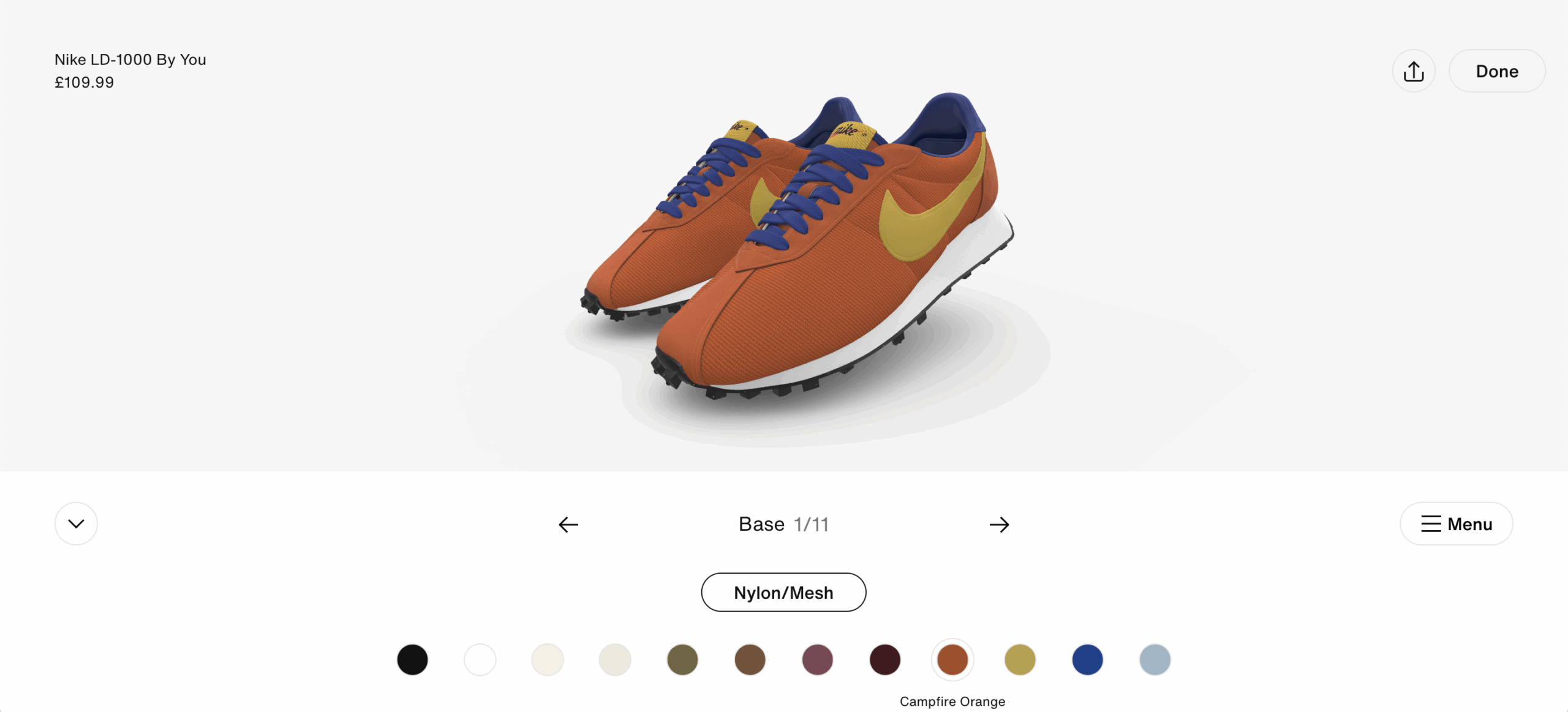
In the consumer goods and retail sectors, configurators primarily aim to simplify purchasing decisions. Customers often want to adjust surface-level features, such as color, size, or material, without overwhelming the details. A lightweight online configurator works best for this environment.
- Electronics. Shoppers select device colors, memory sizes, or accessory bundles in real time.
- Appliances. Customers preview finishes, handles, and control panel designs before placing their order.
- Retail e-commerce. Integrating configurators into storefronts shortens decision-making and builds confidence.
Retailers also benefit from analytics collected through configurators. They learn which variations customers prefer most and can adjust stock or promotions accordingly. Configurators reduce return rates by showing exactly what buyers will receive, which limits disappointment after delivery.
For consumer-facing businesses, speed and ease of access often take precedence over complex features. A smooth browser-based configurator embedded in the shopping flow creates immediate value, improving conversion rates without requiring heavy infrastructure.
Automotive, Aerospace, and Heavy Industry
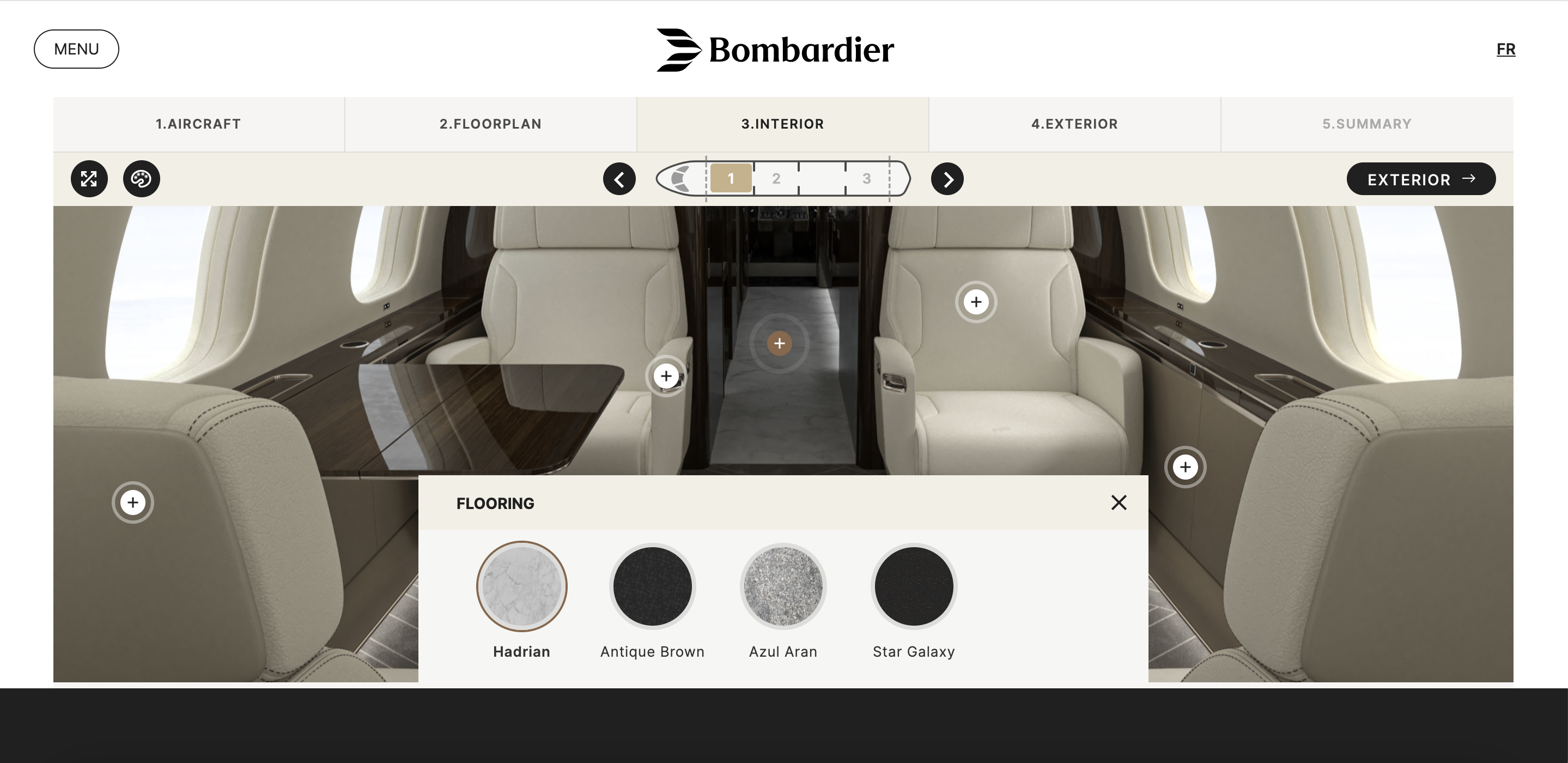
Industries that rely on high-value and complex products often utilize advanced configurators for accuracy and realism. Customers in these sectors usually configure vehicles, aircraft components, or industrial machines with hundreds of variables.
- Automotive. 3D and AR configurators allow buyers to visualize custom trims, interiors, and accessories in lifelike quality.
- Aerospace. Rule-based configurators ensure that only technically valid component combinations are offered.
- Heavy equipment. Industrial buyers examine the scale, features, and optional attachments of machinery before placing large orders.
For these sectors, configurators must integrate directly with ERP, PLM, and CPQ systems to guarantee manufacturability and pricing accuracy. Without these connections, the risk of invalid builds or incorrect quotes is high.
Practical experiments have confirmed that immersive configurators, especially those built using game engines, not only boost customer engagement but also serve the internal engineering teams. They align customer requirements with production feasibility, creating a single reliable pipeline from configuration to delivery.
Furniture, Interiors, and Construction Materials
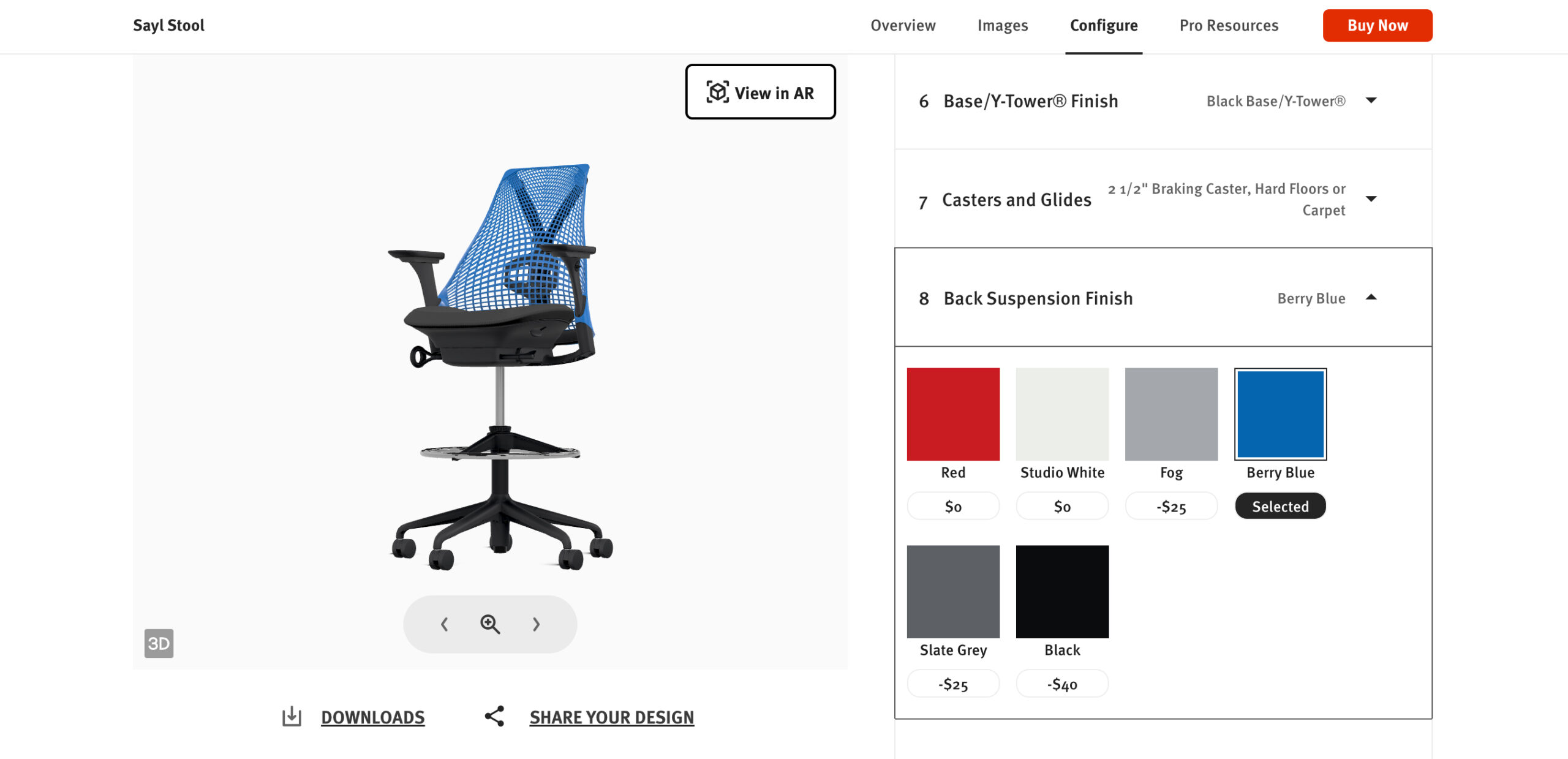
Furniture and interior industries rely heavily on visualization. Customers want to see how a sofa, cabinet, or flooring will look in their own environment before making a purchase. AR and hybrid configurators are particularly effective in this context.
- Furniture. AR configurators let customers place items at scale in their living rooms.
- Interiors. Configurators for paint, flooring, or tiles allow real-time surface previews with accurate lighting.
- Construction materials. Professionals configure windows, doors, and facades, ensuring compliance with technical specifications.
Constraint-driven logic plays a significant role in construction materials. Certain dimensions or material choices may not be feasible, so configurators must prevent invalid combinations from being generated. For furniture and decor, the focus is on reducing returns and boosting confidence by showing exactly how a product fits into a customer's home.
Industry recognition proves that AR and hybrid configurators increase satisfaction in this sector. Customers avoid costly mistakes, while manufacturers streamline custom orders without the need for endless design revisions.
Fashion, Jewelry, and Lifestyle Products
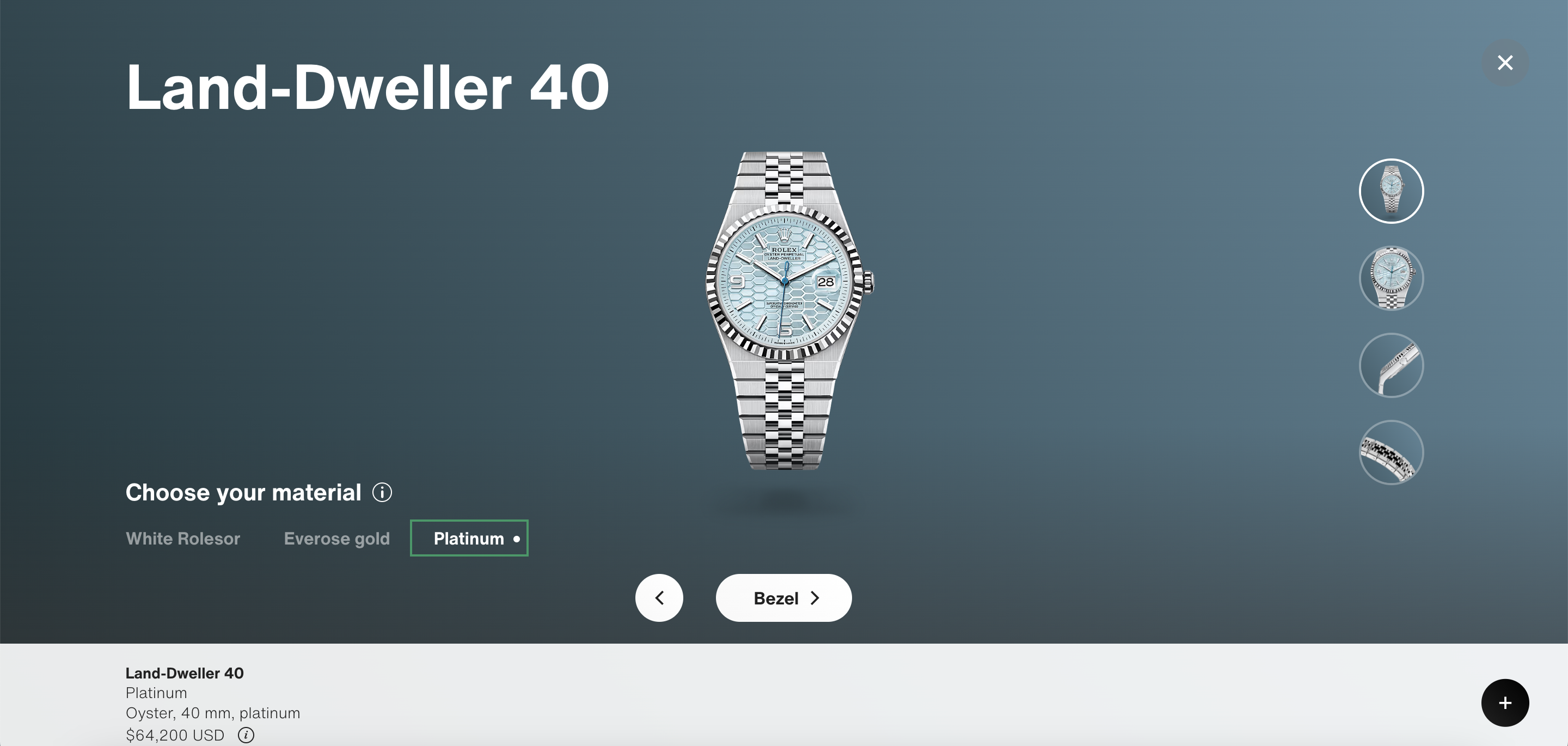
Fashion and lifestyle markets thrive on personalization. Customers expect to be able to quickly customize clothing, shoes, or jewelry and share their creations online. Configurators in this space often prioritize speed and aesthetics over in-depth technical logic.
- Fashion. Shoppers choose fabrics, colors, and patterns for clothing items in lightweight 3D or 2D configurators.
- Jewelry. High-fidelity 3D configurators showcase stones, metals, and engravings with photorealistic accuracy.
- Lifestyle products. Items like watches, glasses, or handbags gain value from customizable finishes and accessories.
Social integration also matters. Configurators often include sharing functions, allowing customers to post their designs on social platforms, which doubles as organic marketing.
Ultimately, lifestyle configurators must strike a balance between speed and luxury appeal. For jewelry, high-resolution detail is essential. For fashion, scalability across thousands of SKUs is more critical. When tailored correctly, these configurators strengthen brand identity and foster stronger customer loyalty.
Essential Factors to Consider When Selecting Configurator Software
The decision to invest in configurator software involves more than visual appeal. A solution that appears strong on the surface may fail if it performs poorly, fails to scale, or lacks proper security. You need to evaluate usability, device compatibility, implementation costs, and long-term maintenance requirements before making a decision. Privacy and data protection must also be accounted for, as configurators often store sensitive customer information.
User Experience and Accessibility
Configurators work well when customers can easily communicate without getting confused. Longer sessions and more confident purchases are more likely when interfaces are clear, response times are quick, and controls are easy to use. Accessibility standards, such as WCAG compliance, ensure that more people can use the site, making it more inclusive.
You can avoid frustration and lower abandonment rates by prioritizing usability from the start. A configurator that is both easy to use and enjoyable builds trust and makes it more likely that people will return.
Performance and Device Compatibility
The performance of a configurator is influenced by its ability to function effectively on various platforms. Models should load quickly, textures should be transparent, and interactions should occur immediately. All devices must work seamlessly together, as customers expect the same level of quality regardless of the device they use.
Testing on multiple operating systems and optimizing asset pipelines helps lower technical problems. You can keep users engaged and prevent them from leaving due to delays or errors by focusing on speed and broad compatibility.
Implementation Costs and Ongoing Maintenance
The full cost of ownership encompasses both the initial development and ongoing maintenance. Consider the costs of hosting, licensing, and the resources required for updates. Scalable solutions may initially cost more, but they can save money in the long run by allowing new product lines to be added without requiring redesign.
Bug fixes, performance improvements, and compatibility updates are also part of ongoing maintenance. By considering these factors, companies can ensure they select a configurator that remains affordable and reliable for many years of use.
Security, Data Management and Privacy
Configurators handle private data, such as payment information and customer preferences, in systems that are interconnected. To maintain trust and prevent breaches, it's crucial to keep this data secure. The platform should have built-in encryption, secure APIs, and compliance with privacy laws, such as the GDPR.
Data management must also ensure that CRM and ERP systems can work together seamlessly without exposing any weaknesses. A robust security approach keeps both customers and businesses safe, making it a must-have when selecting configurator software.
Any Product Configurator Type Made Real with Program-Ace
At Program-Ace, we build configurators tailored to the unique needs of each industry, ranging from lightweight 2D tools to advanced VR and AR platforms. As an innovative solutions integrator, the company delivers not just visuals but fully connected systems that link with ERP, CRM, and e-commerce platforms.
Experience across various sectors, including automotive, retail, and manufacturing, ensures that every project is both technically accurate and user-friendly. Whether the goal is faster sales or richer engagement, our team provides measurable results.
Contact us to discuss your configurator project without further hesitation.

